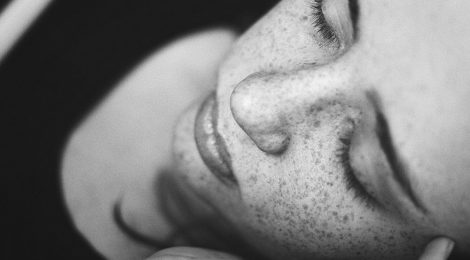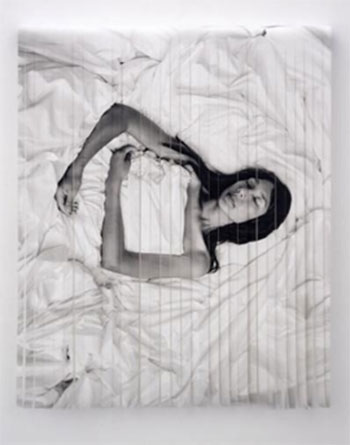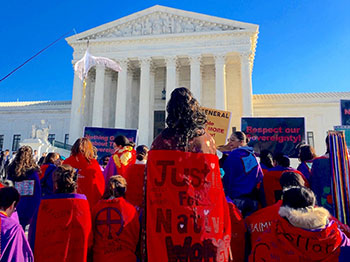
Rebecca Belmore’s Art Raises Awareness for Canada’s Indigenous Women
A catalogue called Vancouver Eastside Missing Women has picture after picture of different Indigenous women and their tragic stories. In one case, Lisa Marie Young, a 21-year-old aboriginal female was celebrating her birthday on June 29, 2002. She and two friends were taking part in the downtown club scene when a stranger in a red Jaguar offered them a lift. At around 4:30 a.m., her friend received a call from Young, saying she had gone to someone’s house and was uncomfortable with the situation. That was the last time she was heard from.
Rebecca Belmore, a Canadian, Indigenous artist living in Vancouver, creates work exploring Indigenous history and identity through sculptures, installations, and video performances. Recently, she has showcased her work at the Art Gallery of Ontario (AGO), in an exhibition called “Rebecca Belmore: Facing the Monumental” that addresses current issues in Indigenous culture such as missing and murdered Indigenous women, by examining the politics of identity and representation.
Wanda Nanibush, the curator of Indigenous Art at the AGO, has been working with Rebecca Belmore for over ten years She is also the writer of the catalogue “Rebecca Belmore: Facing the Monumental.” Regarding Rebecca Belmore’s artwork, Nanibush outlined the themes contained in Belmore’s art in an interview with the Trauma and Mental Health Report:
“She starts by thinking about specific Indigenous issues, but her art is much more universal than that…issues of water, land, homelessness, missing and murdered women… and in general, how women are treated, and how we see ourselves are included in the exhibit.”

“Rebecca Belmore: Facing the Monumental” encompasses several bodies of work that channel Belmore’s polemical voice to address vitally important topics of power relations and unaccounted for deaths in a beautifully evocative way. One video performance is particularly compelling; “The Named and Unnamed”, (2007) is a recording of performative artwork Rebecca Belmore made in 2002 called “Vigil”. This astonishing work is imbued with her passion and pain for the more than sixty women from Vancouver’s Downtown Eastside neighbourhood reported either missing or murdered. According to Nanibush:
“Vigil was done in the Downtown Eastside of Vancouver right after Robert Pickton was arrested for murdering women… he had been operating for a long time there.”
As an Indigenous woman herself, Rebecca Belmore demands careful attention from her viewers, and uses a variety of symbolic tools to recall, and prompt questions about, the circumstances surrounding the disappearances or deaths of the women in “Vigil.” Nanibush explains:
“She wanted to do this performance piece that was about honouring those women and creating this sense of them as women, as people, not just a number… society seems to treat them like they can be discarded.”
A recent report by the Royal Canadian Mounted Police (RCMP), “Missing and Murdered Aboriginal Women: A National Operational Overview”, states that there were 1,017 Aboriginal female victims of homicide reported between 1980 and 2012, accounting for 16% of all female homicide victims, and that every year the figure seems to be increasing. In 1984, Aboriginal women accounted for 8% of female victims. By 2012, Aboriginal women accounted for nearly a quarter of all female homicide victims — far greater than their representation in Canada’s female population. As of April 2015, 174 Aboriginal women across all Canadian police jurisdictions remain missing. Nanibush discussed why these numbers are so troubling:
“We have to look at the way in which police are culpable…they’re not following up on violent case victims, that means we Indigenous women will be targeted because people know that they won’t get punished, leading to the problem continuing.”

The Native Women’s Association of Canada conducted a research, education and policy initiative called “Sisters in Spirit”, led by Aboriginal women, to raise awareness for the alarmingly high rates of violence against native women in Canada. As part of this, the organization shared several personal stories of the friends and family members of female victims of violence to teach the public more about these circumstances. Nanibush highlights the importance of such organizations:
“It’s our strength, power, and collectivity. It is Indigenous women that have worked really hard to bring attention to this issue, it is Indigenous women that have come up with the solutions, and Indigenous women who have made reports.”
Drawing from lived experience and personal connections, Rebecca Belmore’s incredible, multi-disciplinary work uses recurring motifs to critically question and morally challenge a dominant order that is centuries old. As Nanibush explains:
“It’s a colonial problem. It’s been going on since the beginning of colonization because society has been taught that Indigenous women don’t matter; that we are disposable.”
Indigenous women remain at high risk of mistreatment, and it is up to the Canadian public to become more aware. Amnesty International has activated an initiative to allow everyone to learn, get involved, and eventually end these indiscriminate killings.
–Mollia Weidman, Contributing Writer
Image Credits:
Feature: R. F. Pereira at Flickr, Public Domain
First: Rebecca Belmore. “State of Grace”, 2002. Inkjet on paper, 122 x 152 cm. Collection of the artist © Rebecca Belmore. Used with Permission.
Second: Indianz.Com, Creative Commons, some rights reserved.



